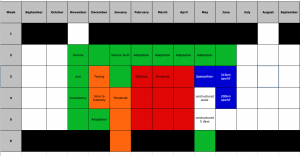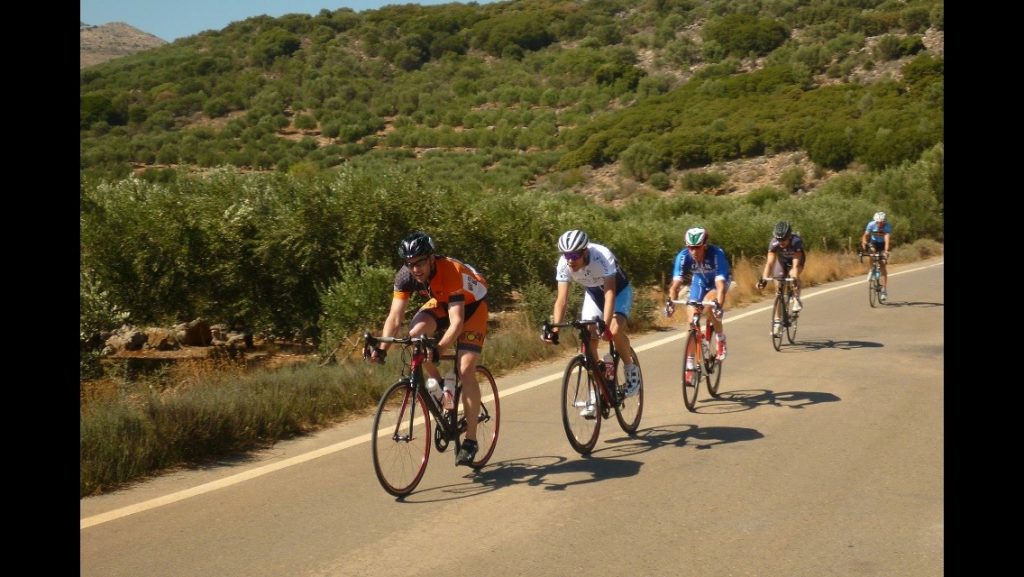12-Weeks to Your Event?
How to Maximise Your Training Gains
So, you’ve entered an event, training has been a bit hit and miss, but you’ve been doing some on and off, but…
now you are 12-weeks out from the event…what to do?
…this is a story I hear fairly often. The question I am always asked is ‘how do I get the biggest gains from the time I have left?’
The key is not to panic train and end up ill, mainly because you will probably be able to manage some panic training long enough to get really close to your event before the illness kicks in and ruins everything!
Though 12-weeks isn’t a massive amount of time, it is long enough to make some significant gains. It’s also long enough to peak too soon if you aren’t patient!! Peaking and bringing on form is something that takes a lot less time than you think.
So What Are Your Options?
Well, any 12-week plan (or however long you have) will always benefit from good a few fundamentals:
- Patience
- Structure and Periodisation
- Frequency, Volume and Intensity
- Good Intensity Control
- Recovery and Adaptation
If you get these fundamentals in place you can gain a huge amount of fitness in 12-weeks. Most importantly if you do this right you will avoid all the mistakes that come with panic training.
Clearly, the specifics of any plan will depend on the type of event and your starting point. Understanding these two things is the starting point for your 12-week plan.
Patience
I put this one first as it is by far the most important. I listen to a lot of podcasts while training on the turbo and often there are quick-fire questions at the end or ‘one piece of advice to help endurance athletes. Almost without fail they mention being patient!!
This means being patient on all levels of your plan. Let the fitness build through diligent, consistent training. Avoiding the overtraining traps that are all around. Also, be patient within workouts…if it’s an easy session, let it be easy, don’t go chasing people down, or turning it into a moderate intensity session. Don’t chase people that overtake you. They aren’t your competition…save racing for race day!
Finally, when it is a day for hard training, be patient with the intervals, don’t hammer so hard you can’t complete the intervals with good quality. Stay relaxed, but if you’ve done your easy sessions easy, your hard sessions can be hard and it’s the combination that will get you to your event in the best condition.
If you read around or listen to a lot of podcasts, all the top coaches, riders and physiologists always say one thing…don’t leave your best efforts in training. Don’t get me wrong, there are times to work hard, but you only have so many of them, so choose your timing wisely and don’t be the one saying ‘if only I could have done last weeks numbers’. It’s surprisingly common as a mistake…You’ve been warned 🙂
Structure and Periodisation
Even though you have a relatively short time until your event…it is still really, really important to structure your training. The good thing about it being a short time is that you do have to one very focused and the plan won’t take ages to write…it’s only 12-weeks 🙂
You can cut it up any way you want, but with 12-weeks I’d stick with the 3-weeks build and one-week adaptation. It depends a bit where you are starting from what exactly you do in those 3 blocks, but given the short time frame, it should be very much focused on the specifics of your event.
You need to structure your weeks around the fundamentals first. Frequency and volume to start with. Be careful not to be too ambitious…remember to be patient.
Let’s take the example of a long Sportif event…long miles and plenty of climbing. With this type of event, you really need to get the frequency and volume up to scratch, start building consistency…I’d use the first block to build up some volume and find what you can handle. Gradually increase your weekly hours over the first. 3 weeks and then do an. easy week in preparation for the next block. It’s easy to skip the adaptation week…but that’s a massive mistake. The problem is you will likely be fine initially but will start to suffer come the 3rd block, just when you don’t want it! Be patient, take an easy week and prepare for what’s to come.

I’d mix in some sweet spot work once a week to stimulate some different systems and if possible one long ride per week. One of the most important things to consider with this kind of event is nutrition. Now I’m not a nutritionist, so I’d suggest. seeking expert advice on the specifics, but you need to eat A LOT on long endurance rides like this, so start training yourself (and your gut) to eat regularly on your rides. You need to make sure you are in the habit of taking on carbs regularly, that you have the skills to eat on the bike. and that you find. foods that suit. you and. don’t cause any issue…gut problems can end a long ride prematurely. There’s no reason to delay learning what works…practise, practise, practise.
The second block I’d continue to build the volume for the 3 weeks of the block. Adding in some more sweet spot work and making sure some of the work is done with low cadence/high torque efforts…this will come in really handy on the long climbs. In this block, I would gradually increase the length of the sweet spot intervals and gradually decrease the rest.
The third block will focus on a bit more specificity, so more difficult to say exactly what you should be doing. But as a general rule, you will become more polarised in your training. Less in the middle and more on either end…low intensity for the desired volume and shorter, but higher intensity intervals. This will allow you to gradually decrease the volume while maintaining your performance gains and being tapered and ready for your event.
Summary
We’ve covered the first two elements that will lead to success in your 12-Week Training Plan. In Part-2 we will cover how to get intensity control and how to make the most of recovery and adaptation.
Part-2 Also contains a free sample training plan to bring together all the information we have talked about.

